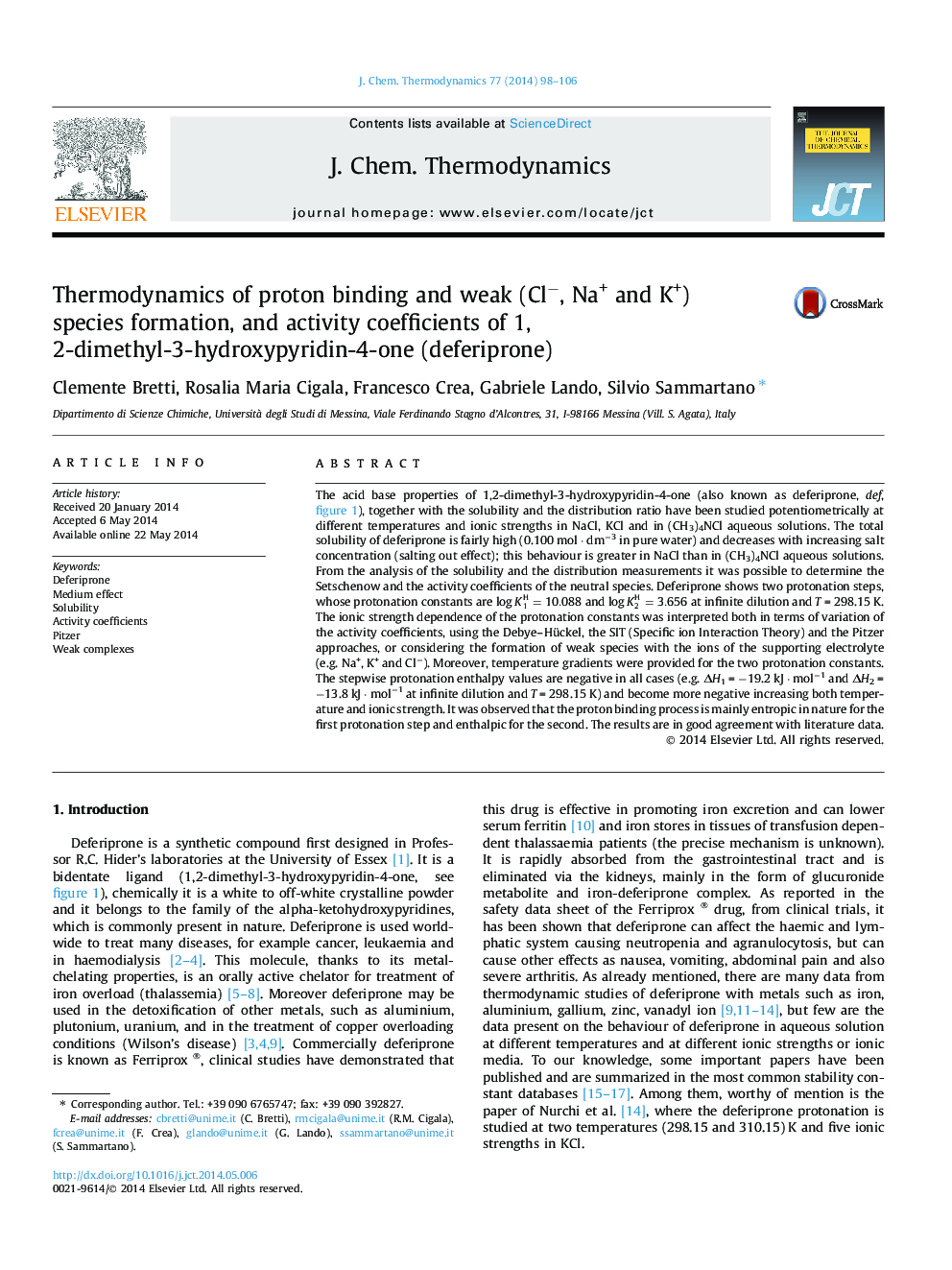| Article ID | Journal | Published Year | Pages | File Type |
|---|---|---|---|---|
| 215299 | The Journal of Chemical Thermodynamics | 2014 | 9 Pages |
•Thermodynamics, solubility and distribution of deferiprone in NaCl, KCl and (CH3)4NCl.•Deferiprone total solubility is 0.100 mol · dm−3 in pure water and shows salting out.•The protonation process is entropic for the first step and enthalpic for the second.•Debye–Hückel, SIT and Pitzer approaches used for modelling of protonation constants.•Formation constants of three weak species were determined, Nadef, Kdef and H2defCl.
The acid base properties of 1,2-dimethyl-3-hydroxypyridin-4-one (also known as deferiprone, def, figure 1), together with the solubility and the distribution ratio have been studied potentiometrically at different temperatures and ionic strengths in NaCl, KCl and in (CH3)4NCl aqueous solutions. The total solubility of deferiprone is fairly high (0.100 mol · dm−3 in pure water) and decreases with increasing salt concentration (salting out effect); this behaviour is greater in NaCl than in (CH3)4NCl aqueous solutions. From the analysis of the solubility and the distribution measurements it was possible to determine the Setschenow and the activity coefficients of the neutral species. Deferiprone shows two protonation steps, whose protonation constants are logK1H=10.088 and logK2H=3.656 at infinite dilution and T = 298.15 K. The ionic strength dependence of the protonation constants was interpreted both in terms of variation of the activity coefficients, using the Debye–Hückel, the SIT (Specific ion Interaction Theory) and the Pitzer approaches, or considering the formation of weak species with the ions of the supporting electrolyte (e.g. Na+, K+ and Cl−). Moreover, temperature gradients were provided for the two protonation constants. The stepwise protonation enthalpy values are negative in all cases (e.g. ΔH1 = −19.2 kJ · mol−1 and ΔH2 = −13.8 kJ · mol−1 at infinite dilution and T = 298.15 K) and become more negative increasing both temperature and ionic strength. It was observed that the proton binding process is mainly entropic in nature for the first protonation step and enthalpic for the second. The results are in good agreement with literature data.
Graphical abstractTrend of the deferiprone protonation constant (log K1H) vs. ionic strength (in the molal concentration scale) in NaCl (□), KCl (Δ) and (CH3)4NCl (○), at T = 298.15 K.Figure optionsDownload full-size imageDownload as PowerPoint slide
